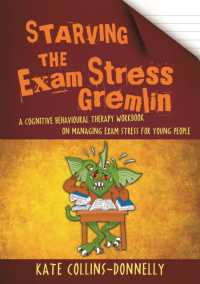- ホーム
- > 洋書
- > 英文書
- > History / World
Full Description
It is now more than two decades since the world stood idly by, witnessing the genocide taking place in Rwanda in 1994. During the one hundred days of killing nearly one million men, women and children were murdered. In many ways, the Rwandan genocide marked the victory of evil: not only were people murdered by their own countrymen, neighbors, friends, and religious leaders, but it was a genocide that had been foreseen and that could have been prevented. This book explores the genocide's historical background, the genocidal ideology and political context (its perpetrators and victims, and the strategy and 'methodology' of the killings); its international dimensions (in particular the involvement or calculated non-involvement of France, the U.S., Belgium, the UN and the other African countries); and the dire question of whether the world could have prevented the massacre. It further draws parallels between the Rwandan genocide and other genocides in the twentieth century; and relates to the policy of punishing murderers by the International Criminal Tribunal for Rwanda in Arusha, Tanzania, and to the traditional judicial system called gacaca.
Finally, it dwells briefly on what happened in Rwanda after the genocide.
Contents
Introduction1. Historical and Political Background2. The Road to the 1994 Genocide 3. The International Dimension of the Genocide4. The Rwandan Genocide in Comparative Perspective5. The Causes of the Rwandan Genocide6. Punishing the Murderers7. After the Genocide: The New RwandaAppendix 1: The History of Rwanda - A ChronologyAppendix 2: The Rwandan Genocide as Described by AuthorsAppendix 3: Statute of the International Criminal Tribunal for Rwanda






